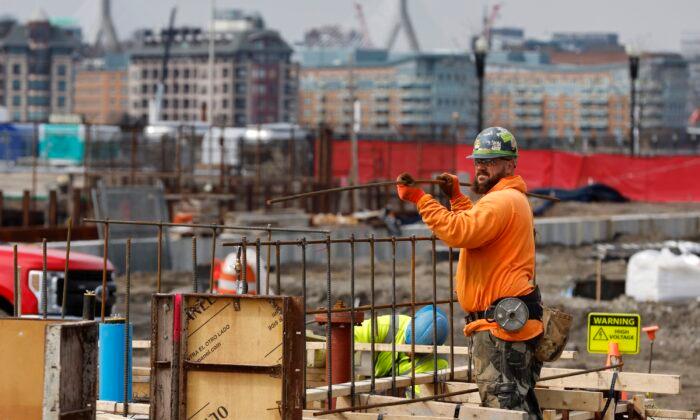U.S. economic growth rose slightly less than expected in the second quarter of 2023 because of less business spending.
The Bureau of Economic Analysis released its second preliminary report on U.S. gross domestic product (GDP)—the government’s primary measure of domestic economic activity—for the second quarter on Aug. 30.
The nation’s GDP rose at a 2.1 percent annual rate, which was higher than the preceding quarter’s rate of 2 percent but below the previous estimate.
Economic Growth Remains Steady
The latest report is a sign that the economy remains steady, despite that the Federal Reserve has raised interest rates for more than a year in its efforts to curb inflation.Real GDP growth rose by 2.4 percent, reflecting less inventory and nonresidential fixed investment.
“GDP is growing because businesses are vertically integrating their supply chains, so they don’t have to go outside of the country,” RedBalloon CEO Andrew Crapuchettes told The Epoch Times.
“Due to geopolitical tensions and conflict, supply chains to the U.S. can be easily disrupted,” he added.
“Because of this move, there has been growth in the industrial sector, which the GDP number measures well. The recent JOLTS report confirms this as there has been a huge demand in blue-collar jobs.”
The Job Openings and Labor Turnover Survey (JOLTS) showed that the number of job openings fell to 8.8 million last month, the lowest number in more than two years.
The U.S. labor market has held up well in spite of the policy rate hikes, but there were some signs of softening.
Fear of US Recession in 2023 Ebbs
Consumer spending, which is measured by personal consumption expenditures and is the main driver of the U.S. economy, was revised higher to 1.7 percent.Disposable personal income was revised to $284.5 billion, or 5.9 percent, in the second quarter, while personal savings rose to $892.3 billion, an upward revision of $22.7 billion from the previous estimate.
Gross domestic income (GDI), which is the amount of revenue generated and expenditures incurred from producing goods and services, rose by 0.5 percent after declining for two consecutive quarters.
The average of real GDP and GDI, which officially determines the timing of business cycles, followed the average closely, rising by 1.3 percent for the quarter, the best result in nearly a year.
The persistently strong labor market and solid consumer spending continue to drive the economy, leading many economists to push their recession forecasts down the road or drop them entirely.
Fed Likely to Raise Interest Rates in Near Future
Meanwhile, any further acceleration in economic activity may force the Fed to hike rates again to ensure a slowdown of output and reduce inflation.According to the latest Consumer Price Index data, inflation had slowed to a 3.2 percent annual pace in July.
The Fed raised rates again as a result last month, bringing its target range of 5.25–5.50 percent to its highest level in more than two decades.
The central bank is still leaving the door open for additional rate increases before the end of the year if necessary but is expected to wait until 2024.
Fed Chairman Jerome Powell told an audience at his annual Jackson Hole speech last week in Wyoming that more rate tightening was possible but that policymakers were taking their time to decide the next move.
He avoided any suggestion that rate hikes were winding down and hinted that more were likely in the future.
“At upcoming meetings, we will assess our progress based on the totality of the data and the evolving outlook and risks,” Mr. Powell said.
“Based on this assessment, we will proceed carefully as we decide whether to tighten further or, instead, to hold the policy rate constant and await further data.”







